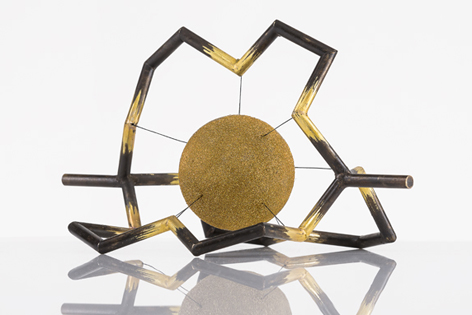Drug delivery through the skin

FAU researchers discover new molecular cages for metal ions
Metal ions such as lithium ions or sodium ions are contained in many everyday substances: table salt, lithium-ion batteries, anti-inflammatory medicines such as Voltaren or blood thinners such as heparin. However, in order to use them – in medicine, for example – they are usually encapsulated in molecular cages. A team of researchers at FAU has now succeeded in producing a new class of such cages which releases the ion by controlled decomposition. In this way, it might be possible to deliver drugs through the skin, thus ensuring that they come into effect only after they are inside the body. These findings have recently been published in the renowned journal Nature Communications*.
Molecular ion cages and their effects have been known in chemistry for almost 50 years but so far it has been extremely difficult and expensive to produce and use them. The research group led by Dr. Max von Delius, junior research groups project co-ordinator at FAU’s Chair of Organic Chemistry II, has discovered a new process to address these problems: through one-pot synthesis, in which the chemical ingredients are mixed together in a pot – just like when preparing a pot of stew – production of the cages has become much simpler and large numbers can be produced as a result. Moreover, due to their unique, three-dimensional structure, these new cages can be used in many different areas. For instance, it is very easy to couple them with dye molecules or decompose them in a controlled manner which might make it possible to directly release the encapsulated metal ions in the future.
As a chemist, von Delius finds it particularly impressive that the synthesis can be carried out in only one step. In practical applications, the new cages could open up new possibilities which have been unthinkable until now because they were too expensive. In medicine, for instance, molecular cages have long been an interesting option for ‘smuggling’ medicines such as heparin sodium into the body through the skin instead of administering them through injection. Another area of practical application targeted by the FAU researchers is lithium-ion batteries or similar batteries. The molecular cages could be used to increase the electrodes’ long-term stability and thus the overall battery life. Smartphone users may no longer have to charge their phones’ batteries over night.
A sculpture by Anne Fischer, a silversmith from Nuremberg, proves that the molecular cages are also very aesthetically pleasing (see image in PDF). Based on experimental data from the FAU chemists, she created a detailed oversized version of the new molecular cages.
* R.-C. Brachvogel, F. Hampel, M. von Delius: Self-assembly of dynamic orthoester cryptates. Nature Communications 2015, DOI: 10.1038/ncomms8129
The article is available online at nature.com
Further information:
Dr. Max von Delius
Phone: +49 9131 8522946
max.vondelius@fau.de